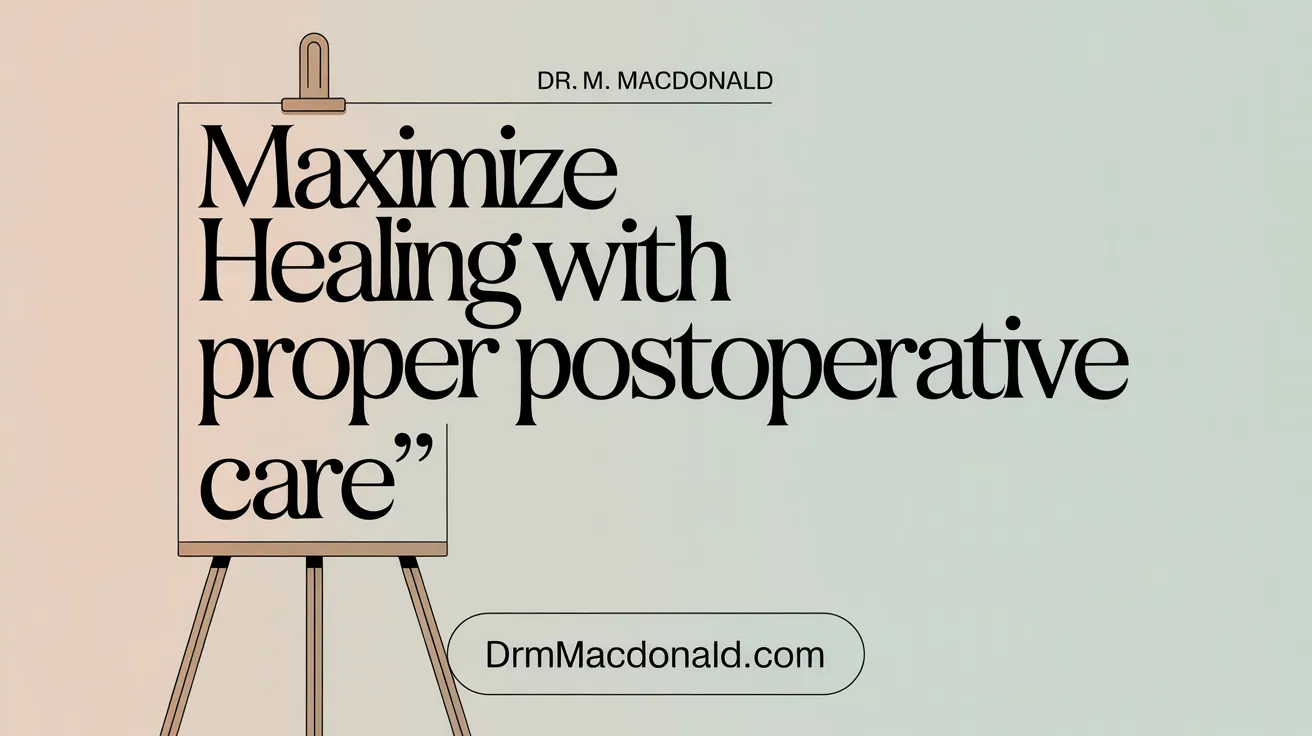Introduction
Facial surgery can dramatically enhance appearance, but it inevitably leaves scars at the incision sites. Understanding how scars form, evolve, and how to care for them is essential for anyone seeking to minimize their visibility and promote optimal healing. This article explores the healing timeline of facial scars, factors influencing scar formation, effective postoperative care, treatments to improve scar appearance, and signs that indicate when medical advice is necessary. Whether undergoing cosmetic or reconstructive facial procedures, being informed about scarring empowers patients to manage expectations and aids in achieving better long-term aesthetic results.
The Healing Timeline of Facial Scars: What to Expect

What is the typical healing timeline for facial scars after surgery?
The healing process for facial scars follows a predictable timeline but varies depending on individual factors. Initially, the wound seals quickly, with the skin closing within about two days. By 5 to 10 days, the scar tissue begins to gain strength.
During the first week, the wound undergoes an inflammatory response, characterized by redness, swelling, and sometimes slight tenderness. This phase is essential for preventing infection and setting the stage for tissue regeneration.
About 4 weeks after surgery, the proliferative phase begins, marked by collagen production that helps rebuild skin strength and structure. This collagen buildup can cause the scar to appear raised and reddish or purple in hue.
The longest part of the healing process is the maturation phase, which extends from several months up to 12 to 18 months. During this period, the scar gradually softens, flattens, and changes color.
How do scars change in appearance over time?
Initially, scars often appear red, swollen, and raised. In the first three months, they tend to thicken and develop a more vivid hue, which signifies active healing and blood vessel growth.
As healing progresses, the redness diminishes due to decreased blood flow, and the scar tissue begins to remodel. The scar usually becomes softer and more compatible with surrounding skin. The color may fade from pink or purple toward a shade that blends with adjacent tissues.
Some scars may retain a slight pink hue or remain mildly raised even after a year. The texture often improves, becoming smoother and less noticeable.
How long does scar maturation take?
Scar maturation involves structural and color changes that can last from 12 to 18 months after the initial injury or surgery. During this period, ongoing collagen remodeling results in a more refined appearance.
While most scars achieve acceptable cosmetic results within a year, some continue to improve for up to two years, especially with proper care and management.
What are expected color and texture changes?
In the early healing stage, expect the scar to be red, purple, or pink, with a firm or raised texture. Over months, color fades and the scar becomes more similar to surrounding skin.
The texture also evolves from hard and raised to softer and flatter. Maintaining good wound care, sun protection, and possibly applying silicone gel sheets can promote favorable changes.
Understanding this timeline helps set realistic expectations and guides appropriate post-operative care to optimize scar appearance.
Factors Influencing Scar Formation and Healing Effectiveness

What factors influence scar formation and healing efficacy?
Scar formation and healing are complex processes influenced by a mix of biological, local, cellular, external, and lifestyle factors.
Biological factors such as age, genetics, ethnicity, and skin type play significant roles. Younger individuals tend to heal faster, with less prominent scarring, while older skin may have diminished regenerative capacity. Certain genetic predispositions can lead to abnormal scars like keloids or hypertrophic scars. Overall health and skin condition also impact how well a wound heals.
Local wound characteristics include the depth, size, and location of the incision or injury. Areas under high tension or with less blood supply—such as joints or extremities—often develop more noticeable scars. The thickness of the skin and the proximity to vital structures can also influence healing quality.
At the cellular level, elements such as fibroblast activity, collagen production, and the regulation by growth factors like Transforming Growth Factor-beta (TGF-β) are crucial. Excessive collagen deposition can cause raised scars, while insufficient collagen can lead to weak, insubstantial scars.
External influences are equally important. Proper wound care—keeping the wound moist, preventing infection with antibiotic ointments, and protecting from further trauma—can significantly reduce scar visibility. Sun exposure can darken scars permanently by increasing pigmentation if the scar is not protected with high-SPF sunscreen or clothing, making avoidance essential.
Lifestyle choices also affect healing outcomes. Smoking impairs blood flow and collagen synthesis, leading to poorer scars. Poor nutrition, stress, and inadequate hydration can similarly delay healing and worsen scar appearance.
In summary, multiple factors—from intrinsic biological traits to external practices—interact to determine how a scar develops and how effectively it heals. An optimal healing process involves personalized care that considers all these influences to minimize scar size and improve appearance.
Optimizing Postoperative Care to Minimize Scars

What postoperative care instructions promote optimal healing and better scar outcomes?
Effective postoperative care plays a vital role in reducing the visibility of scars and ensuring proper healing. Initially, maintaining a clean and moist environment around the wound is essential. Applying antibiotic ointments, such as antibiotic creams, helps prevent infections that can cause larger, more noticeable scars. Keeping the wound moist also accelerates epithelialization and minimizes scabbing, which could lead to excess scar tissue formation.
In addition, the use of silicone-based products like gels and sheets can significantly improve scar appearance. These silicone options keep the scar hydrated, helping it flatten and soften over time. Regular scar massage, typically starting 2 to 3 weeks after sutures are removed, stimulates blood flow and can break down hardened scar tissue, enhancing flexibility and reducing firmness.
Protecting the scar from sun damage is crucial, as UV exposure can darken scars permanently. Patients should diligently wear broad-spectrum SPF 30+ sunscreens, hats, or protective clothing when outdoors, especially during the first 12 to 18 months after surgery.
Lifestyle factors such as avoiding strenuous activities—particularly those that put stress on healing scars—and quitting smoking also support better healing outcomes. It’s important to follow all medical instructions carefully and attend scheduled follow-up appointments, so surgeons can monitor healing progress and provide tailored advice.
Adhering to these practices—keeping the wound clean and moist, preventing infection, protecting from the sun, and making healthy lifestyle choices—plays a crucial role in achieving optimal scarring results and reducing long-term visibility.
Treatment Options for Improving Scar Appearance and Revision

What treatments and interventions are available for scar revision and management?
Managing scars effectively involves a variety of treatments, ranging from simple topical applications to complex surgical procedures. The goal is to improve the appearance, texture, and flexibility of scars while minimizing their visibility.
One of the most common non-invasive options is the use of silicone-based products, such as gel sheets and gels, which help keep the scar moist and promote a flatter, softer result. Silicone sheets like Mepiform® and Biocorneum® are applied daily and are effective for preventing hypertrophic or keloid scars from worsening.
Corticosteroid injections offer another targeted approach, especially for raised scars like hypertrophic scars or keloids. These injections work by reducing inflammation and collagen overproduction, often leading to a reduction in scar size and firmness.
In addition to topical and injectable treatments, advanced therapies have gained popularity for their ability to remodel scar tissue. Laser treatments, including laser resurfacing, can smooth rough textures and diminish discoloration. Dermabrasion and chemical peels are also utilized to remove the upper layers of damaged skin, encouraging new skin growth.
Microneedling, sometimes combined with radiofrequency like Morpheus8, stimulates collagen production and can improve the skin’s overall appearance. Evidence suggests that starting microneedling as early as six weeks post-surgery can yield significant improvement within a few months.
For irregular, raised, or severe scars unresponsive to conservative treatments, surgical scar revision may be necessary. This involves excision of scar tissue, Z-plasty, or repositioning scars in less conspicuous areas after they are fully healed—typically around 12 to 18 months. Alternatively, skin grafts or closure techniques can help hide large or persistent scars.
Other modalities include cryotherapy, which freezes keloids to flatten them, and pressure therapy to reduce scar thickness. In some cases, ongoing management combines multiple approaches for the best aesthetic and functional results.
When considering scar treatments, timing is crucial. Many interventions are more effective once the scar has matured, but some procedures like microneedling and laser treatments can be initiated earlier to optimize healing.
Consulting with a dermatologist or plastic surgeon allows for personalized treatment planning, ensuring options are tailored to the scar type, location, and patient health. Combining these modalities often results in the best overall improvement, highlighting the importance of ongoing evaluation and adapting treatment strategies as the scar heals.
Recognizing Abnormal Scarring and Setting Realistic Expectations

What are the signs of abnormal or problematic scarring, and when should medical advice be sought?
Abnormal scars often reveal themselves through certain symptoms. Excessive redness, swelling, persistent pain, or itchiness may signal problematic healing. Raised scars that extend beyond the original wound margins, known as keloids, and hypertrophic scars that are confined but appear bulky are notable signs requiring medical assessment. Changes like darkening of the scar, lump formation, or ulceration also indicate potential issues. Additionally, scars that cause functional impairments—such as restricting movement or causing discomfort—should be evaluated by a healthcare professional. Signs of infection, including the presence of pus, increased redness or swelling, and fever, demand immediate medical attention to prevent complications. While scars normally improve over 12 to 18 months, some may remain visibly noticeable. Managing expectations involves understanding that while various treatments can significantly diminish their appearance, completely eliminating scars is rare. Proper sun protection is essential during healing because UV exposure can darken scars, making them more noticeable. Regular follow-up visits help monitor scar evolution and adjust management strategies. Recognizing these signs early and seeking prompt care ensures optimal healing and aesthetic outcomes.
What are realistic expectations regarding the duration and changes in facial scar healing over time?
Facial scars go through a maturation process that typically spans 12 to 24 months. Most initial improvements, like flattening and softening, happen within the first six months. During this period, redness and purple or pink coloration tend to fade, and scars become less raised. However, some texture and color variations may persist indefinitely, especially if the scar is deep or located in highly mobile areas. Healing time and final appearance depend on factors such as age, skin type, and scar location. Younger, thinner skin generally heals more rapidly and with better results. Although scars tend to improve naturally, they usually do not become entirely invisible. Treatment options like silicone gels, massages, or laser therapy can enhance their appearance. Patience and adherence to scar management routines are vital. Setting realistic expectations helps patients understand that visible scars are often a natural part of healing but can be greatly improved with proper care.
Conclusion
Scarring after facial surgery is an unavoidable but manageable aspect of the healing journey. Understanding the typical healing timeline, recognizing factors that influence scar formation, and adhering to detailed postoperative care instructions can significantly improve outcomes. Patients should remain vigilant for signs of abnormal scarring and seek medical advice when necessary to address complications early. A variety of treatment options exist to minimize scar visibility and restore skin function, ranging from topical therapies to advanced surgical techniques. Realistic expectations regarding the duration and appearance changes of scars contribute to patient satisfaction. Ultimately, collaboration with skilled surgeons and dermatologists, combined with diligent care and sun protection, empower patients to attain the most favorable aesthetic and functional results following facial surgery.
References
- Tips for Reducing Scarring After Facial Surgery
- Caring for Your Scars After Skin Surgery
- Scarring After Plastic Surgery: Everything You Need to Know
- Update on Postsurgical Scar Management - PMC
- Scar Revision - Facial Cosmetic Surgery
- Plastic Surgery Scar Management
- Managing Scarring and Complications After Facelift
- Tips for Minimizing Surgical Scars | Austin, TX
- Scars from Mohs Surgery: What You Need To Know
- Scar Revision: What It Is, Who Is a Candidate ...
